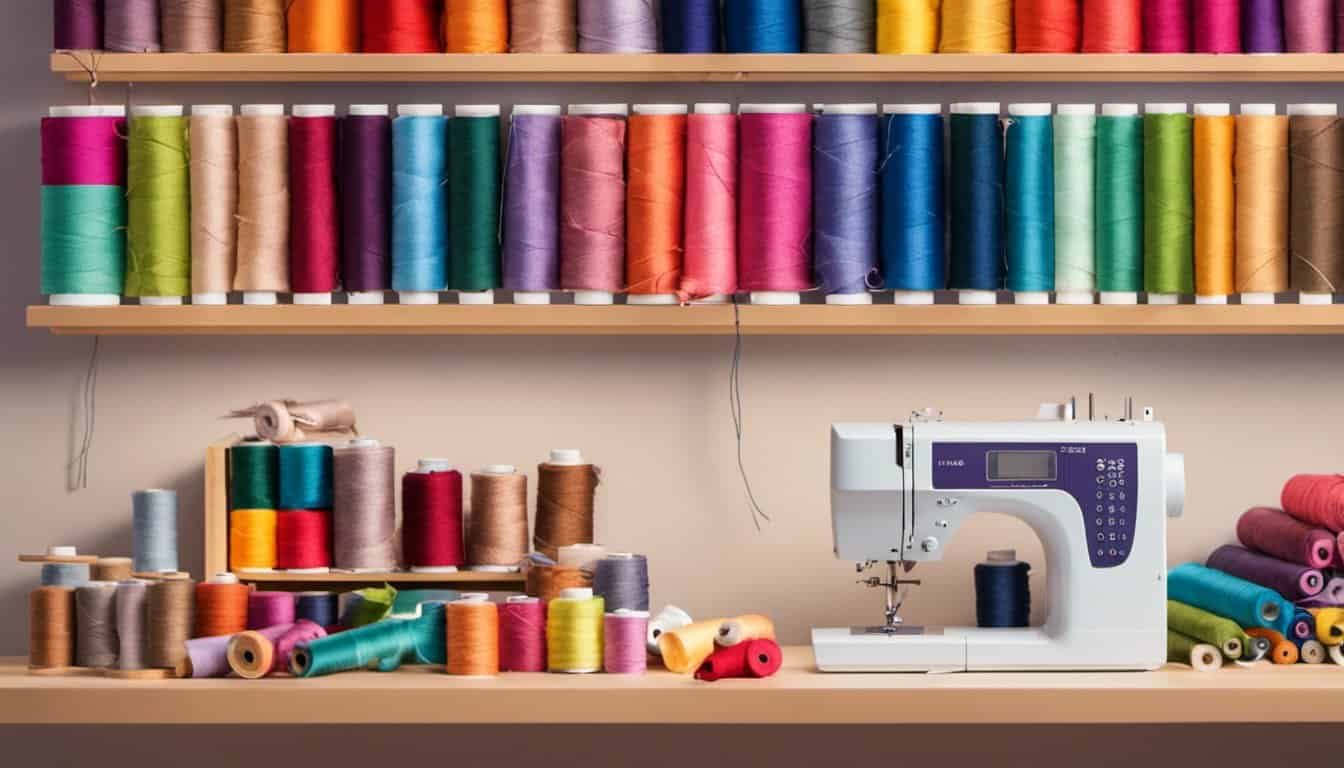Embarking on a sewing journey is exciting, but beginners often encounter a few bumps along the way. I’ve been there, feeling the frustration when projects don’t turn out as expected.
From choosing the wrong fabric to misjudging seam allowances, these common mistakes can slow your progress. But don’t worry—I’m here to help you navigate these challenges with ease.
Let’s explore the five most frequent sewing errors beginners make and how you can avoid them, ensuring your projects are smooth and enjoyable every step of the way.
1. Choosing the Wrong Fabric
Selecting the appropriate fabric is crucial for the success of any sewing project. Using the wrong fabric can lead to poor results and added frustration.
Understanding Fabric Types
Fabrics fall into two main categories: woven and knitted. Woven fabrics include cotton, linen, and denim, known for their durability and structured appearance. Knitted fabrics, such as jersey, fleece, and spandex blends, offer stretch and flexibility, making them ideal for garments that require movement. Additionally, fabrics vary in weight, ranging from lightweight streams to heavy-duty upholstery materials. Each type serves different purposes and behaves uniquely during the sewing process.
Selecting Fabric for Your Project
Choosing the right fabric depends on the project’s requirements. For example, selecting cotton for a summer dress provides breathability, while polyester is suitable for items that need wrinkle resistance. Considering the fabric’s stretch is essential; projects like activewear demand stretchy materials, whereas home decor items may require sturdier fabrics. Additionally, examine care instructions to ensure the fabric’s maintenance aligns with the intended use. Matching the fabric’s characteristics with the project’s needs ensures a successful outcome.
2. Not Using the Appropriate Thread
Using the right thread is crucial for successful sewing projects. It ensures durability and a professional finish.
Matching Thread to Fabric
Selecting the correct thread type enhances your fabric’s performance and appearance. For example:
- Cotton Thread: Ideal for natural fibers like cotton and linen, offering strength without overpowering the fabric.
- Polyester Thread: Suitable for a wide range of fabrics, providing elasticity and resistance to shrinking or stretching.
- Silk Thread: Perfect for delicate fabrics such as silk and chiffon, offering a smooth finish and minimal visibility.
- Heavy-Duty Thread: Best for sturdy materials like denim and canvas, ensuring seams hold up under stress.
| Thread Type | Best For | Characteristics |
|---|---|---|
| Cotton | Natural fibers | Strong, breathable, low sheen |
| Polyester | Versatile fabrics | Elastic, durable, wide color range |
| Silk | Delicate fabrics | Smooth, lustrous, minimal visibility |
| Heavy-Duty | Sturdy materials | Extra strength, thick, durable |
Avoiding Thread-Related Issues
Proper thread selection prevents common sewing problems. Consider these tips:
- Reduce Breakage: Choose strong threads like polyester for high-stress seams to minimize snapping.
- Prevent Puckering: Match thread weight to fabric weight to ensure smooth seams without distortion.
- Enhance Durability: Use appropriate thread types for different fabrics to maintain seam integrity over time.
- Achieve Even Stitches: Consistent thread quality helps maintain uniform stitch size and tension, resulting in a polished finish.
By matching your thread to your fabric and addressing potential issues proactively, your sewing projects will achieve better results and last longer.
3. Incorrect Measuring and Cutting
Accurate measuring and cutting are critical steps in sewing. Mistakes here can lead to poorly fitting garments and wasted fabric.
Accurate Measuring Techniques
I use a flexible measuring tape to ensure precision. Always measure twice before cutting. For body measurements, stand straight and relax to get the most accurate numbers. Mark measurements clearly on the fabric with tailor’s chalk or fabric markers. Using a ruler or a straight edge helps maintain consistency, especially for patterns with straight lines. Additionally, familiarize yourself with common measurement terms like ease and seam allowance to incorporate them correctly into your projects.
Tips for Precise Cutting
Sharp scissors make a big difference. I keep my fabric scissors separate from those used for paper to prevent dulling. Prewash your fabric to account for any shrinkage before cutting. Lay the fabric on a flat surface and secure it with weights or pins to avoid shifting. Use pattern weights for intricate designs to maintain the integrity of your cuts. Cutting in a well-lit area helps you see details clearly. For curved lines, follow the pattern lines slowly and carefully, adjusting as needed to keep your cuts smooth and accurate.
4. Poor Sewing Machine Maintenance
Keeping your sewing machine in top shape ensures smooth projects and prevents frustrating interruptions. Neglecting maintenance can lead to poor performance and costly repairs.

Regular Maintenance Practices
I follow these essential maintenance steps to keep my sewing machine running smoothly:
- Clean Regularly: Remove lint and dust after each use using a small brush or compressed air. This prevents buildup that can affect stitching quality.
- Oil Moving Parts: Apply sewing machine oil to designated areas as per the manufacturer’s instructions. Lubrication reduces friction and wear.
- Change Needles Frequently: I replace needles after every 8-10 hours of sewing or when they become dull. A sharp needle ensures even stitches and prevents fabric damage.
- Cover When Not in Use: Storing my machine with a cover protects it from dust and accidental damage. It also keeps it clean between projects.
- Store Properly: I keep my sewing machine in a dry, stable environment to avoid rust and mechanical issues. Avoiding extreme temperatures prolongs its lifespan.
Troubleshooting Common Issues
Even with regular maintenance, issues can arise. Here’s how I handle some common problems:
- Thread Jams: If threads get tangled, I first remove the spool and rethread the machine, ensuring the thread path is correct. Clearing any debris often resolves the issue.
- Skipped Stitches: Skipped stitches usually mean a dull needle or improper threading. I replace the needle and double-check the threading to fix this.
- Uneven Tension: Uneven tension affects stitch quality. I adjust the tension settings according to the fabric type and thread weight, ensuring balanced stitches.
- Machine Stalling: If the machine stops unexpectedly, I turn it off and unplug it. Then, I check for any obstructions or loose parts before resuming.
- Noise Issues: Unusual noises can indicate need for cleaning or lubrication. I inspect the machine for any loose screws or parts and address them promptly.
By maintaining my sewing machine regularly and addressing issues as they arise, I keep my sewing projects on track and enjoy a more seamless crafting experience.
5. Skipping Pattern Preparation
Neglecting pattern preparation sets the stage for errors in your project. Properly preparing patterns ensures accuracy and efficiency.
Importance of Preparing Patterns
Preparing patterns correctly guarantees that all pieces fit together seamlessly. It reduces fabric waste and minimizes the need for adjustments during sewing. Accurate pattern preparation leads to professional-looking results and a more enjoyable crafting experience.
Steps to Proper Pattern Preparation
- Choose the Right Pattern
« 10 Expert Tips on How to Sew a Narrow Hem for Sheer Fabrics Like a Pro
What Is a Bobbin and How to Wind It: 10 Secrets Every Sewer Needs to Know »
Select a pattern that matches your skill level and project requirements. Consider fabric type and garment style to ensure compatibility.
- Read the Instructions Thoroughly
Carefully review the pattern instructions before starting. Understanding each step prevents mistakes and streamlines the sewing process.
- Measure and Mark Accurately
Take precise body measurements and transfer them to the pattern. Use a measuring tape and marking tools to ensure all dimensions are correct.
- Cut the Fabric with Care
Lay the pattern pieces on the fabric, aligning grainlines properly. Use sharp scissors or a rotary cutter for clean edges and accurate cuts.
- Label Each Piece
Clearly label pattern pieces with their corresponding project parts. This organization helps keep track of pieces and simplifies assembly.

- Test Fit if Necessary
For complex projects, create a muslin or test garment. This step identifies potential issues before cutting into your final fabric, saving time and materials.
By following these steps, you lay a solid foundation for your sewing projects, resulting in better fits and higher-quality finishes.
Conclusion
Embarking on my sewing journey has been incredibly rewarding. Steering clear of these common mistakes really changed how I approach each project. I’m excited for you to try out these tips and see your skills grow. Remember that every stitch is a step forward so stay patient and enjoy the process. Happy sewing!

















